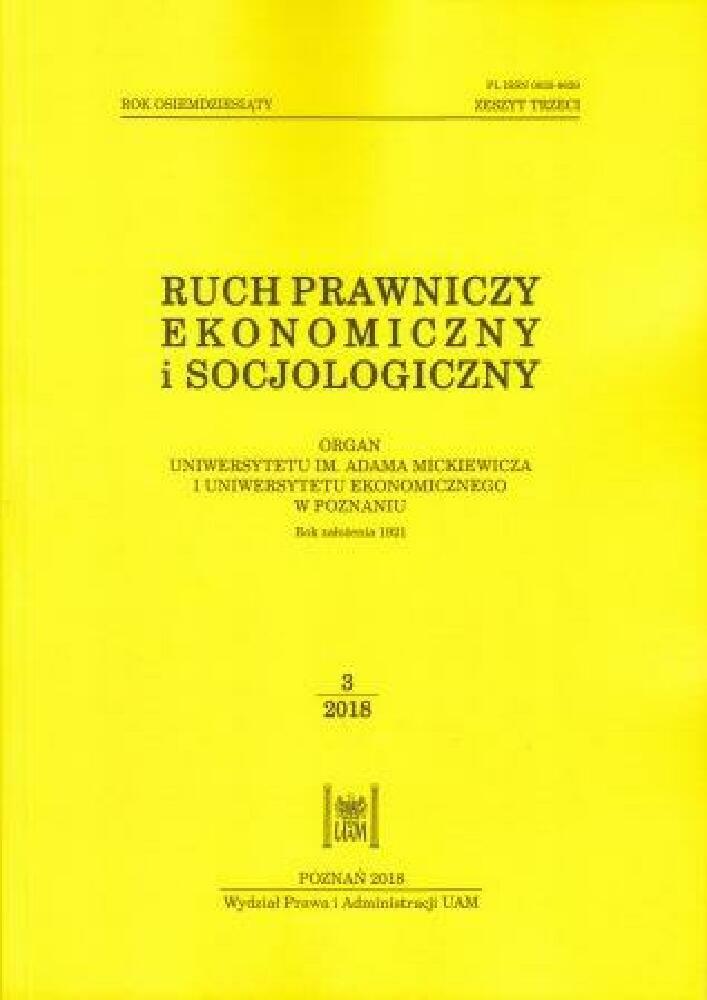Abstract
The aim of the article is to present the potential of the R&D relief as a support and activator prompting Polish entrepreneurs to take measures that may help Polish enterprises to increase their innovation position. The original form of the relief in question and its subsequent modifications have been examined. The research was conducted on the basis of a comparative analysis and a case analysis, using the deduction and induction methods. Since the innovativeness of Polish enterprises, measured by the Summary Innovation Index, had for years been at one of the lowest levels recorded in the European Union, the R&D allowance was introduced into the Polish tax system with an aim of improving the position of Polish enterprises in innovation ratings. The analysis of the mechanism, the criteria and the scope of potential deductions under the relief allows to state that it is a much more advantageous and effective tool providing more benefits to entrepreneurs than the former allowance offered for the purchase of new technologies. The results of the conducted analysis allow a conclusion that enterprises are highly interested in using the relief which is an effective, albeit not a direct instrument supporting innovation activity.References
Chesbrough, H.W. (2003), Open Innovation: The New Imperative for Creating and Profiting from Technology, Boston.
Glapiński, A. (2012), Schumpeterowska teoria przedsiębiorcy, czyli skąd się bierze pies, Konsumpcja i Rozwój 1(2): 3–12.
Górka, M. (2015), Wybrane poglądy na temat innowacji jako czynnika konkurencyjności podmiotów gospodarczych, Prace naukowo-dydaktyczne, Państwowa Wyższa Szkoła Zawodowa w Krośnie, z. 68, Krosno: 31–55.
GUS (2016), Działalność badawcza i rozwojowa w Polsce w 2015 r., Warszawa: 1–4.
Kozioł-Nadol, K. (2015), Modele zarządzania innowacjami w XXI wieku, Szczecin: 295–302.
Kranicka, T. (2009), Innowacyjność przedsiębiorstw – uwarunkowania organizacyjne, Katowice: 165–179.
Mikołajczyk, B. (2014), Mierniki monitorowania innowacyjności w skali makro w krajach Unii Europejskiej, Studia Ekonomiczne 186, cz. 1: 282–292.
Misztal, A. (2017), Otwarte innowacje w polskich przedsiębiorstwach – ewolucja, Zeszyty Naukowe Małopolskiej Wyższej Szkoły Ekonomicznej w Tarnowie 33(1): 27–37.
Nowak, P. (2014), Preferencje podatkowe dla innowacyjnych przedsiębiorstw, Prace Komisji Geografii Przemysłu Polskiego Towarzystwa Geograficznego 28: 162–183.
OECD (2005), Guidelines for Collecting and Interpreting Innovation Data, Oslo Manual, Paris.
Prystrom, J. (2015), Innowacyjność a konkurencyjność gospodarki Luksemburga, Prace Naukowe Uniwersytetu Ekonomicznego we Wrocławiu 41: 399–411.
Rojek, D. (2014), Otwarte innowacje jako model interaktywnego zarządzania innowacjami, Administracja i Zarządzanie 28 (ZN 101): 207–218.
Sikora, J., Uziębło, A. (2013), Innowacja w przedsiębiorstwie – próba zdefiniowania, Zarządzanie i Finanse 2(2): 351–376.
Ustawa z dnia 26 lipca 1991 r. o podatku dochodowym od osób fizycznych, t.j. Dz.U. 2018, poz. 200.
Ustawa z dnia 15 lutego 1992 r. o podatku dochodowym od osób, t.j. Dz.U. 2018, poz. 1036.
Uzasadnienie do ustawy o zmianie niektórych ustaw w związku ze wspieraniem innowacyjności (2015), Druk 3286: 7.
Zagóra-Jonszta, U. (2015), „Teoria rozwoju gospodarczego” i „Twórczej destrukcji” Schumpetera oraz jej aktualność, Optimum. Studia Ekonomiczne 3(75): 30–31 [DOI:10.15290/ ose.2015.03.75.02, 215: 23].
License
Copyright (c) 2018 WPiA UAM

This work is licensed under a Creative Commons Attribution-NonCommercial-NoDerivatives 4.0 International License.




